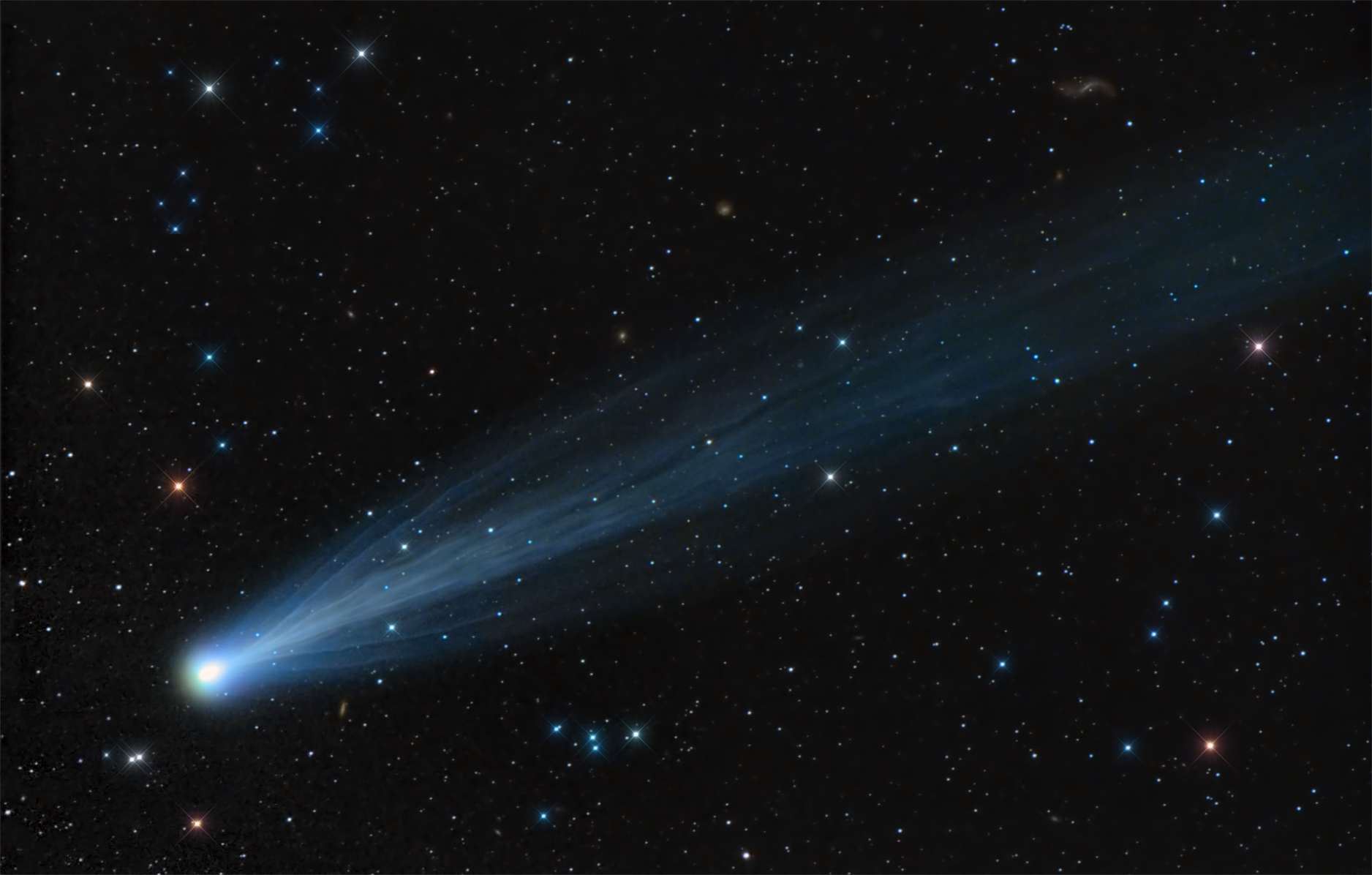 |
| Comet ISON, on November 15. Credit: Damian Peach |
There's been a lot of news lately about the brightening of Comet ISON. If it survives its close passage to the Sun on November 28, it may grow even brighter and so it's receiving some attention. However, most of the information I've seen has been for observers in the Northern Hemisphere. I figured I'd see what I could figure out about observing comet ISON from Chile. Unfortunately, things don't look too promising for the Southern Hemisphere.
For the details, read on.
Comets are generally described as dirty snowballs given that they are mainly icy objects with sprinklings of dust and small rocky particles. As they approach the Sun, the ices sublimate (go directly into the gas phase) which ejects material outward forming a cloud of gas and dust around the core, or nucleus of the comet. As the material, particularly the ionized gas, interacts with the solar wind, a stream of charged particles coming from the Sun, it flows outward forming a long tail. Note that the ion tail always points away from the Sun, whereas the dust tail mainly follows the orbital path.
Comet ISON was discovered in September, 2012 by Vitali Nevski and Artyom Novichonok (so another appropriate name is comet Nevski–Novichonok). ISON stands for International Scientific Optical Network, which is the organization that led to the discovery. This comet is a long-period, sungrazing comet. That is, it came from the outer reaches of the solar system and will pass extremely close to the Sun. Because it passes so close, it may break apart and thus everyone is waiting to see what will happen as it gets closer to the Sun.
 |
| Santiago, Chile. Nov 24, 2013. Looking East. Click to see larger. |
Right now, the comet can be seen low in the Eastern sky right before sunrise. Using the Stellarium software, I generated an image (above) of the sky as seen from Santiago on November 24, looking East. A few caveats, though: I disabled the atmosphere so you can see clearly the location of the planets and Sun in the image. This is about an hour after sunrise, so you ideally want to look earlier (ie, before the Sun is up!). However, that this means the objects are lower in the sky, which is the second image below.
 |
| As before, but just before sunrise. The Earth's atmosphere has been included to show the sky brightness. |
For the image above, I've re-activated the atmosphere so you get a sense of how bright the sky will be. Note that the comet will be low on the sky, about 6 degrees above the horizon. If you've visited Santiago, you'll know that when you look East you don't see the empty ocean in the figures. Instead you see the towering Andes Mountains. Hence, you'll have difficulty seeing objects low on the horizon! The comet is getting ever closer to the Sun, so if you look earlier than the date I used (Nov 24), the comet will appear higher in the sky at sunrise.
Now, what about a few days after its closest approach to the Sun (perihelion; on Nov 28)?
The image below shows the location of the comet and Sun on December 5th, also an hour or so after sunrise and again with the atmosphere turned off so you can see everything. The comet is South of the Sun (towards the left in this image), but located between the Sun and horizon. That means the Sun rises first and unless the comet is extremely and unusually bright, you won't be able to see it. This is similar for other dates in early December: you can't observe comet ISON before sunrise.
 |
| Santiago, Chile. December 5, 2013. Looking East near sunrise. |
What about sunset? Unfortunately, here we are defeated too. The figure above shows the same thing but looking West. As you can see, the comet is again between the Sun and the horizon so it sets before the Sun has a chance to do so.
 |
| As before, but looking West near sunset. |
So the verdict is that if you want to observe comet ISON and you live in the Southern Hemisphere, your best bet is to do so now. The comet is now bright enough to see with the naked eye, but you still need a dark sky. The comet will get brighter as it gets closer to the Sun, but it will get harder to observe from down here. Those of you in the Northern Hemisphere will have a far easier time observing comet ISON, should it survive perihelion. Best of luck!
Want to know how to use Stellarium to see where comet ISON will be? Check out this link for instructions.
If you just want a simple chart of where comet ISON is, you can use The Sky Live.
Update 2013-11-21: As I'm at La Silla Observatory, which has a dark night sky atop the mountains in central Chile, I decided to try and see if I could spot comet ISON. Unfortunately, I had no luck. I checked East around 6am before the Sun was up. The comet should have been at an altitude of about 10 degrees, which isn't ideal. However, the main problem was that the sky was already pretty bright. I had trouble seeing any magnitude 2 stars and the comet should have been ~6 times fainter. Perhaps binoculars are needed to see it against the early morning light.
No comments:
Post a Comment
Note: Only a member of this blog may post a comment.